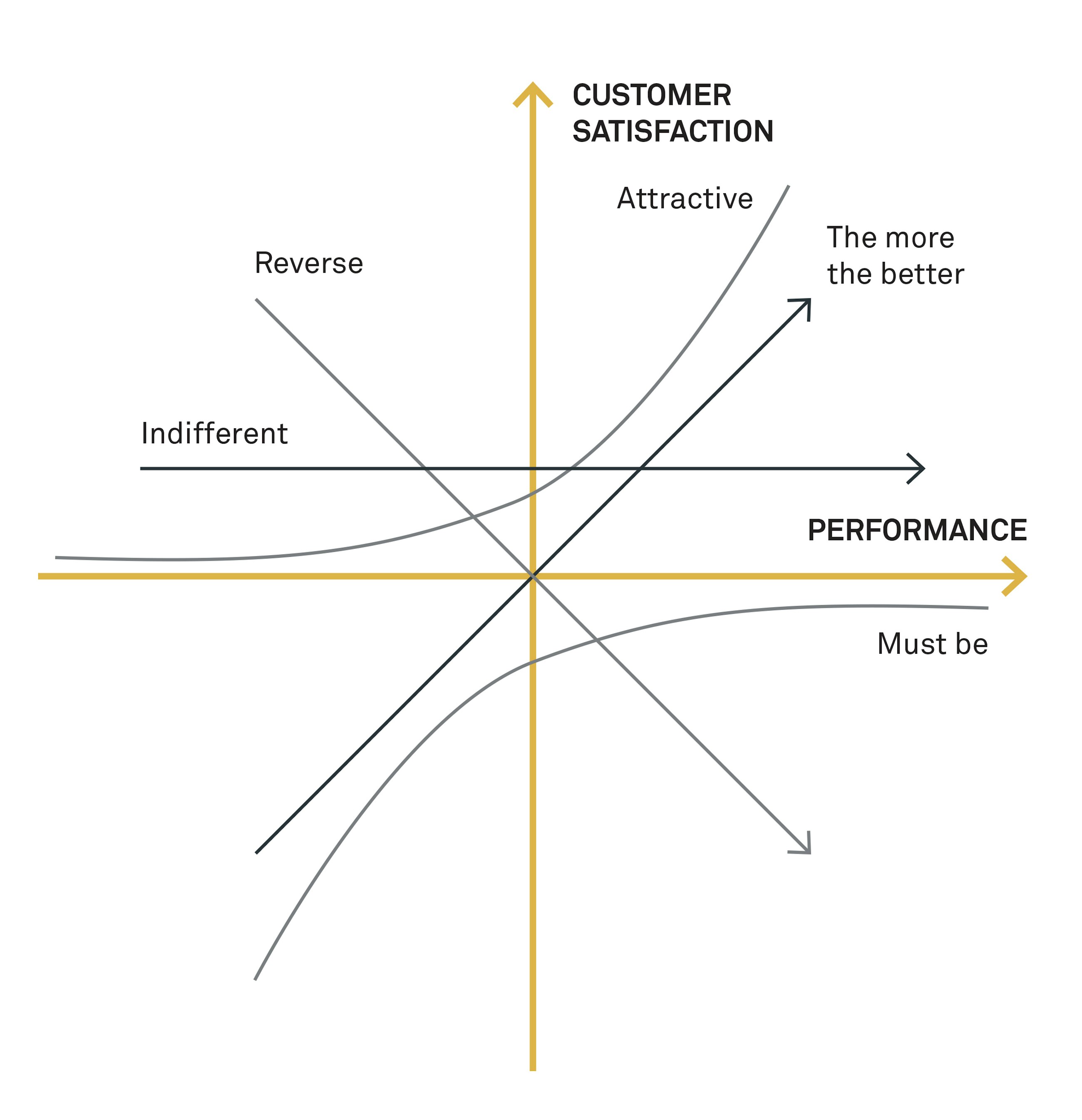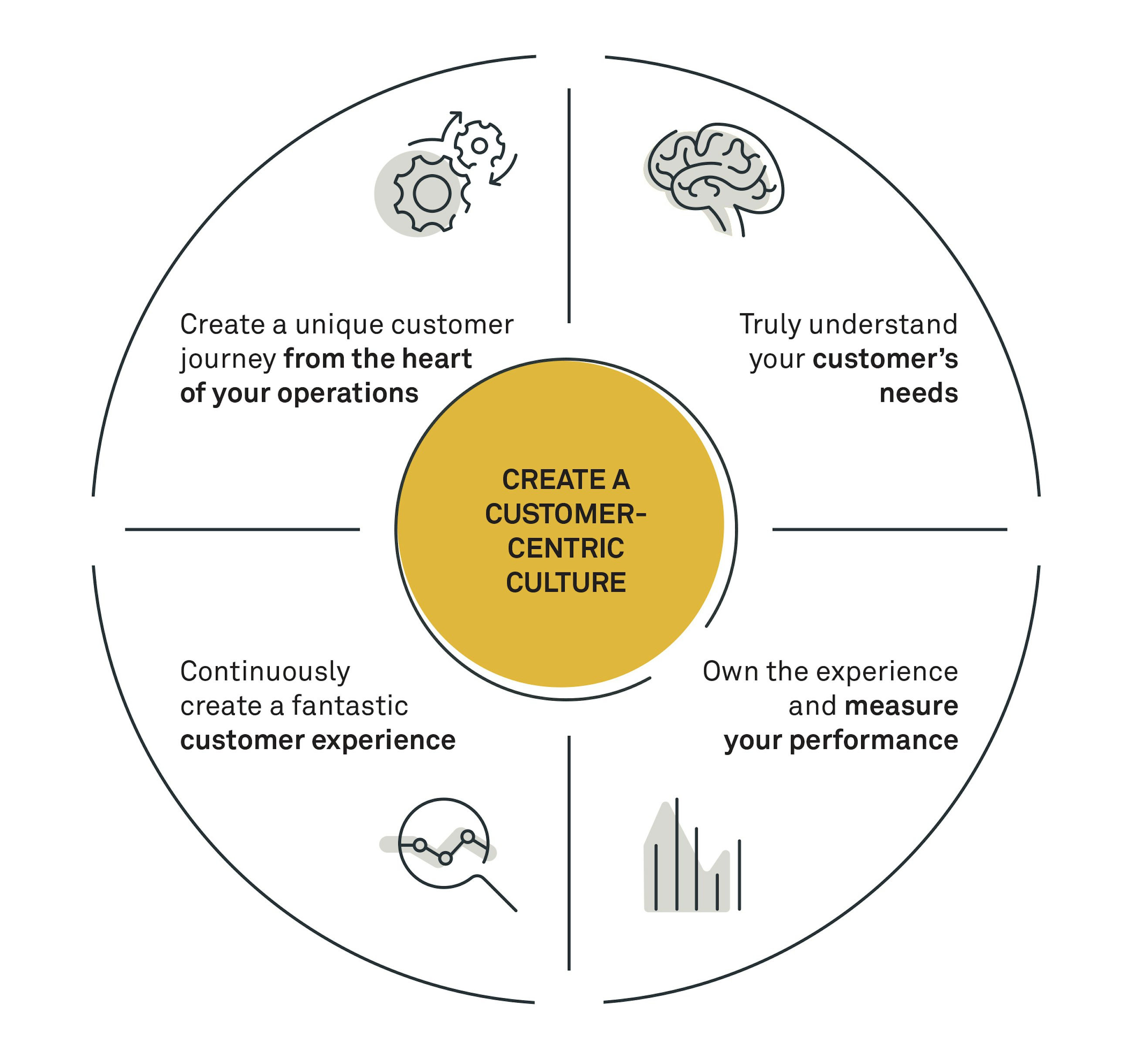How a customer-centric culture can give you a competitive advantage
10 July 2020
Customer centricity and customer experience
If customer centricity is said to be the organisational commitment or strategy to assure the success of your customer, then customer experience is a set of customer perceptions across the customer journey. In other words, all the interactions with the organisation and its brand.
Customer centricity has for a long time been on the agenda, yet there are few companies that truly could be considered customer-centric. Why do so many companies then struggle to get customer centricity right? The reason is not a lack of data on customer needs and behaviour. All available reports show the opposite. Very few organisations manage to translate the data into increased customer centricity. There is also a discrepancy in the translation from customer insights collected by marketing functions to improved internal processes and operational functions. In our view, the single most common thing companies lack is an organisational culture that nurtures customer centricity. The culture remains product-focused or sales-driven and is not considering the differentiator among the hardest to copy: the customer experience.
What attributes on your touchpoints will increase customer experience?
Using the Kano model, it is possible to map all possible attributes of all features and touchpoints in order to visualise which ones are attractive, i.e. increasing customer experience. Looking at the overall drivers to obtain customer satisfaction, peace of mind is the strongest driver, which in its prolongation is connected to the time after purchase, where the organisation usually has less control of the process. How do we then assure peace of mind for the customer? By designing the moments of truth (most important touchpoints) along the customer journey so that they create peace of mind even after the purchase, for example by a strong service/support programme that comes alongside the purchase of the product or service.
This does not mean that we should stop focusing on the “must be”, attributes that our offering must include in order to give us license to sell. It is not either or, it is both. And it is both that will keep us ahead of our competitors.
The progression of customer value creation
The evolvement of better ways to fulfil customer needs has led to a higher maturity level in delivery of value. Customer experience is a new step in this direction, however, most likely not the final step. This maturity differs with regard to different offerings and different markets, and the first competitor to include customer experience when designing their offerings will have a definite competitive advantage. Customer experience is a highly efficient way of getting a strong competitive advantage. The advantage is the ability to deliver a product or service, better fulfilling the need of the customer.
So, what are the tangible benefits of successfully addressing customer experience? According to Forrester’s Customer Experience Index, customer experience leaders outperform the laggers by 14% when it comes to compound average revenue growth. High customer satisfaction also highly impacts stock performance. When comparing the S&P 500 with a high customer satisfaction portfolio, the latter outperforms S&P 500 by a factor of five. This is a strong argument for the competitive advantage of adopting a customer experience- oriented approach.
Apart from the tangible benefits, the fact that it is very hard to copy a well-adopted organisational customer experience approach is a major advantage. The reason is that it is anchored not only in the product, but deeply in the culture and behaviour of all employees executing the activities that comprise the creation of the final customer experience. Any attempt to copy the creation of a successful customer experience, without understanding the fundamental principles behind it, will have difficulties obtaining the same benefits.
Customer-centric culture
To sustain the continuous delivery of a great customer experience, a customer-centric culture is needed. A customer-centric company must have leaders who communicate and live by that culture. Leaders that truly understand customer needs and continuously inspire all employees with fresh customer insights. The awareness of customer orientation should be incorporated from the first interview with a potential employee and continue until their last day of employment.
The customer centricity should be connected to measurable entities to help leaders motivate employees to sustain the customer-oriented approach. Customer interaction should also be made possible and encouraged for employees. This is to improve understanding of the customer and their experience throughout the customer journey among all employees.







